NEWS
Brutal tactics of gangs who send decapitated enemies’ heads to their wives and their hearts to their parents – as it’s declared the toughest place on earth to be a cop

Brutal tactics of Ecuador’s gangs who send decapitated enemies’ heads to their wives and their hearts to their parents – as it’s declared the toughest place on earth to be a cop
Latin America has for decades been synonymous with the drug trade thanks to ruthless cartels and criminal gangs whose power and brutality cannot by tamed by the government or the armed forces. Some countries like Ecuador had managed to remain relatively peaceful for decades, despite bordering the notorious cocaine hotspots of Colombia and Peru.
But the coastal nation has seen murder rates soar in recent years as drug lords and criminal masterminds dug their hooks into fresh territory and exploited its ports for maximum profit. In 2020, Mexico – the world-renowned epicentre of sicario savagery – had a murder rate was 29 per 100,000 people with Colombia trailing close behind at 26.8. Ecuador sat at a comparatively minuscule 7.7.
Three years on, Ecuador’s murder rate had shot up to a horrifying 44.5 per 100,000 people – far outstripping both Mexico and Colombia to become the murder capital of Latin America. Gangland shootouts now commonly rock the streets – particularly in the bustling port of Guayaquil and Esmeraldas, where the crime rate and incidences of violence have skyrocketed.
Just last month, 22 people were killed in a bitter gun battle in Guayaquil’s northern neighbourhood of Nueva Prosperina as members of the infamous Los Tiguerones syndicate carried out a hit on a rival group. Ecuador’s President Daniel Noboa, who this weekend won re-election, has vowed to crack down on the criminal gangs tearing the nation apart.
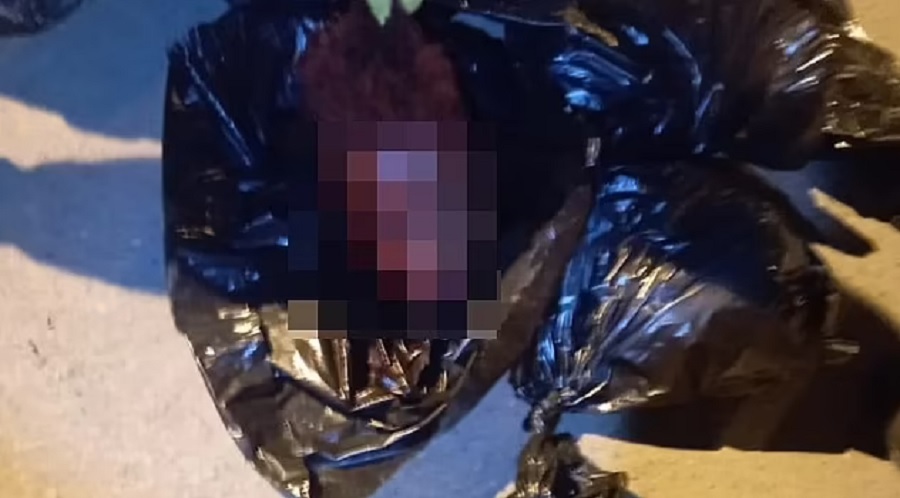 A trio of severed heads are found wrapped in black bags after a cartel killing spree
A trio of severed heads are found wrapped in black bags after a cartel killing spree
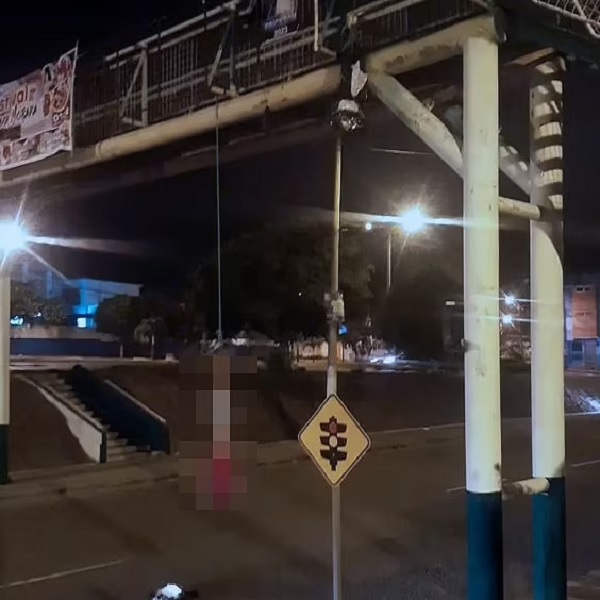 A mutilated body hangs from a bridge in Ecuador
A mutilated body hangs from a bridge in Ecuador
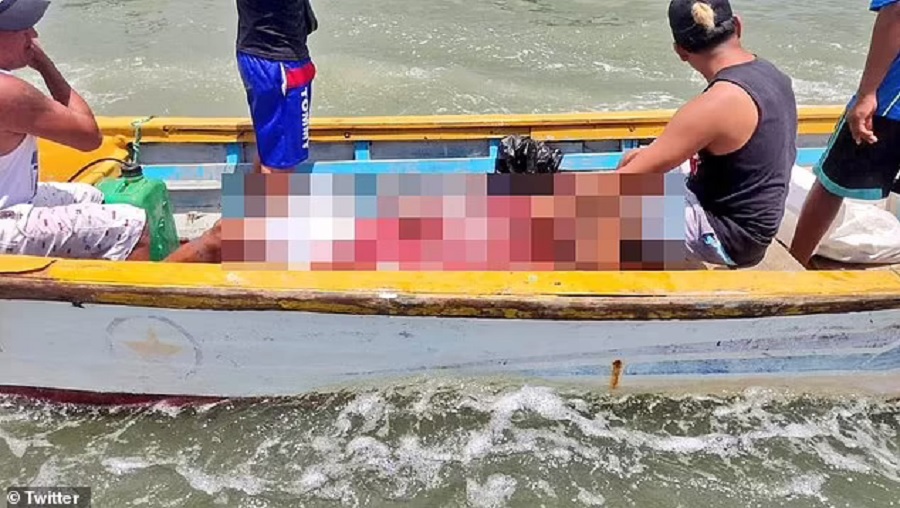 The bullet-riddled corpse of one victim of a cartel shootout lies sprawled on the deck of a blood-soaked boat in the port town of Porsorja
The bullet-riddled corpse of one victim of a cartel shootout lies sprawled on the deck of a blood-soaked boat in the port town of Porsorja
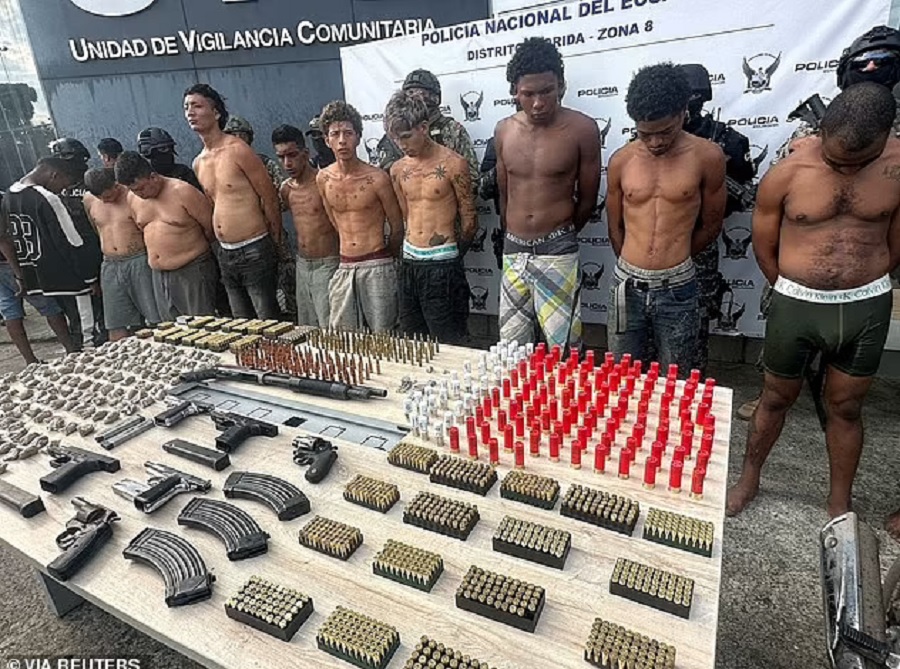 Ecuador’s National Police presents individuals detained during a police operation following gang clashes that resulted in multiple victims, in Guayaquil, Ecuador, in this handout photo distributed on March 7, 2025
Ecuador’s National Police presents individuals detained during a police operation following gang clashes that resulted in multiple victims, in Guayaquil, Ecuador, in this handout photo distributed on March 7, 2025
 Ecuador’s President Daniel Noboa addresses supporters after early returns show him in the lead in the presidential election runoff at his family home in Olon, Ecuador, Sunday, April 13, 2025
Ecuador’s President Daniel Noboa addresses supporters after early returns show him in the lead in the presidential election runoff at his family home in Olon, Ecuador, Sunday, April 13, 2025
But despite a range of drastic steps, including declaring a state of emergency and mobilising the military to fight the cartels in January 2024, the gang violence shows few signs of abating, making the life of law enforcement officers a living hell.
Now, unsatisfied with simply shooting their targets dead, Los Tiguerones – and other groups like Los Lobos and Los Choneros, as well as foreign gangs surging into Ecuador – are developing their own signature methods to mark their territory and warn anyone who would dare try to stand in their way. From cutting out the hearts of their rivals to hanging their prey from bridges in medieval-style public executions, this is a look at some of the tactics employed by Ecuadorian gangs to display their dominance.
Beheadings
A staple in the classic narcos repertoire of violence, beheadings are becoming all the more common in Ecuador. Not only is the grisly practice used as a shock-and-awe tactic to discourage normal citizens from defying or challenging the cartels, but it is also seen as a way to send messages directly to rival gang members or even government officials. In the port city of Esmeraldas, a trio of severed heads were found wrapped in black bags in one particularly gruesome incident in 2023.
All three victims were relatively young, and one of them was still a teenager, according to his devastated mother who was tasked with identifying his remains. But police alleged they had ties to organised crime and were therefore fair game in the eyes of the sicarios. Some gangs will ‘sign’ their atrocities with some unique spin.
In one incident reported on Valentine’s Day this year, the body of one of 14 people massacred in gangland killings was horrifically mutilated. His head was sent to his wife, while his heart was cut out and placed on the threshold of his parents’ house, a policeman claimed.
Another recent incident saw a man decapitated on his birthday, according to locals, before the head of yet another victim was left on a street in the city’s outskirts wrapped in plastic. The rest of his body was later found in a ditch with its intestines spilling out over pale, tortured skin.
His blood-soaked head meanwhile was discovered along with a hand-written warning message signed CNG, or Cartel Nueva Generacion – the initials of one of Mexico’s most fearsome narco gangs. The Jalisco New Generation Cartel (also known as CJNG or CNG) has been described by the US Department of Justice as ‘one of the five most dangerous transnational criminal organisations in the world’. The CJNG has been battling the notorious Sinaloa cartel for dominance in the coca fields of Colombia and Peru for years, but is now hell-bent on seizing control in Ecuador, which has become the primary location from which to export cocaine to Europe rather than the US.
Public hangings
The utility of performative punishments meted out by the medieval kings and queens of Europe centuries ago to intimidate criminals and discourage peasants from challenging their authority are not lost on the cartels. In days gone by, offenders would be strung up in a public square with a noose tied around their neck before the hangman sent them plunging to their deaths in front of a crowd of onlookers.
But the cartels have added their own little twist – beheading their victims before suspending their lifeless bodies upside down from bridges in the centre of town. Such a horror scene recently graced the roads of Esmeraldas when a pair of corpses were found dangling from an overpass close to a school.
One victim was dressed in a dirty red shirt and shorts, his bloody stump of a neck swinging listlessly in the breeze just feet from the concrete. Another decapitated man suspended above him had been hastily wrapped in a black binbag. Meanwhile, a bag of human remains was found spattered on the road in the inland city of Quevedo, its weight having snapped the rope that had kept it hovering mid-air from the walkway above.
Torture and body dumps
Many victims of the cartels meet their end in very public places, as described in plentiful detail above. But there are undoubtedly many more who are tortured and killed by the drug gangs before being left to rot in shallow graves. A trio of young women, including one teenager, met the very same fate two years ago this week.
The bodies of the three missing girls – Nayeli Tapia, 22, Yuliana Macias, 21, and 19-year-old Denisse Reyna – were uncovered alongside the Esmeraldas River, about 60 miles inland from the city of the same name. The horrifying discovery was made by local fishermen who noticed a dog sniffing the ground alongside a river bank and alerted officials after coming across the foul stench of decomposing flesh. Police officers were called to the scene where they dug up and uncovered the bodies of the young women from the shallow grave.
 The murdered women were identified as (left to right) Yuliana Macias (21), Denisse Reyna (19) and Nayeli Tapia (22)
The murdered women were identified as (left to right) Yuliana Macias (21), Denisse Reyna (19) and Nayeli Tapia (22)
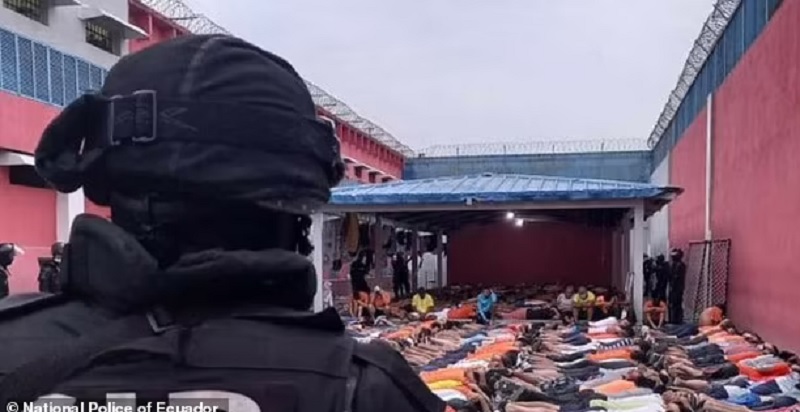 A gang war at the Litoral Penitentiary in Guayaquil, Ecuador on Wednesday, September 29, 2021 left over a hundred dead and many injured
A gang war at the Litoral Penitentiary in Guayaquil, Ecuador on Wednesday, September 29, 2021 left over a hundred dead and many injured
For many, day-to-day life in many cities including Esmeraldas and Guayaquil has become unbearable with protection rackets pushing many shops and companies out of business. Ordinary citizens are damned if they do, damned if they don’t – those who refuse to pay up are murdered, while others who buy into the cartels’ strong-arm tactics run the risk of being gunned down by rival gangs.
A recent report by respected NGO Crisis Group found that the livelihoods of many ordinary families in poor areas of Ecuador now depend on the drug business, with men selling cocaine while women pack it into plastic bags. One of the Crisis Group authors, expert Glaeldys Gonzalez Calanche, told MailOnline that the narcos’ influence is spreading across the country: ‘These groups are slowly gaining more ground or territorial control outside of these areas that they currently run.’
Ironically, one of the key areas where the gangs have established their dominance is in the prison system itself. In the notorious, sprawling ‘La Peni’ in Guayaquil, different gangs control each of 12 wings. ‘They have become centres of operations for these criminal groups and hotbeds of the violence when they fight for control of the illicit businesses both inside and outside the prison,’ Calanche said.
In 2019, William ‘Cubano’ Humberto, the leader of one drug gang, was decapitated and incinerated in jail. Grisly videos of prisoners playing football with his severed head quickly leaked on social media. Frequent riots and uprisings in jails across Ecuador result in mass deaths. One famous intra-gang war behind the bars of the Litoral penitentiary in 2021 resulted in the deaths of more than 100 inmates.
Ecuador’s most violent gangs
Ecuadorian authorities attribute the unprecedented spike in violence in the past few years to a power vacuum triggered by the killing in December 2020 of Jorge Zambrano, the leader of the Los Choneros cartel. His death sparked a spate of infighting and attempts by rival cartels to wrest control of key trafficking spots away from Los Choneros.
Los Choneros
Los Choneros is a huge criminal organisation that authorities have linked to extortion, murder and drug trafficking, among other crimes. It is based in the town of Chone, from which the group derives its name, in the Manabí Province and was officially formed in 2005. Its founder and first leader was a man named Jorge Bismark Véliz España, known as Chonero or Teniente España, said to have started out as a drug dealer.
Bismark first worked for another gang – Los Queseros – headed up by Carlos Jesús Cedeño Vera, known alternatively as El Rojo or El Quesero. However, the two became enemies, with El Rojo ordering Bismark’s murder. While he failed to kill Bismark himself, the hit attempt did injure both the gangster and his daughter, and also killed his wife.
In retaliation, Bismark gathered members of his family, friends and criminal associates – collectively known as Los Choneros – and killed Vera’s brother and son. The attack and the retaliation resulted in a war breaking out between the two sides and led to the eventual destruction of Los Queseros – with Los Choneros still standing to this day. While his gang survived, Bismark did not.
In 2007, he was gunned down near Quito by assassins, and he was replaced by Jorge Luis Zambrano – one of the hitmen in the group’s early iteration. In the years that followed, Los Choneros rose to the top of organised crime in Ecuador, helped by the gang’s alliance with Ecuador’s biggest drug trafficker, Washington Prado Alava, alias ‘Gerald,’ who was based in Manabí. The successful partnership was also facilitated by a money laundering expert – ‘Fito’ – who rose to the top of Los Choneros and managed its criminal activities from prison after Zambrano was killed in December 2020.
Los Tiguerones
Los Tiguerones was once a small support unit of Los Choneros and rose to prominence in 2019 with roughly 900 members. Four years on, the organisation has expanded from its birthplace in northern Ecuador to become a leading player on the national scene as well as in neighbouring Peru. Los Tiguerones is known to be linked to Mexico’s feared Jalisco New Generation Cartel (CJNG) – a gigantic organised crime syndicate known for its wanton, extreme violence.
In 2023, it emerged the CJNG was forcing new members into cannibalism and had started sharing videos of gang members feasting on the hearts of their enemies. It is also believed that Los Tiguerones was behind the assassination of Los Choneros’ Zambrano in 2020, as well as the explosion of violence in September 2021 at the Litoral Penitentiary in Guayaquil which saw 119 prisoners killed.
Los Lobos
Like Los Tiguerones, Los Lobos is also a ‘Nueva Generación’ splinter group from Los Choneros that formed in the wake of the assassination of Zambrano. Los Lobos is actually allied with Los Tiguerones, both of which have helped fuel a wave of violence across the country. On August 9, 2023, a masked man claiming to be a member of Los Lobos took responsibility for the assassination of presidential candidate Villavicencio.
According to local reports, Lobos’ leader was Wilmer Chavarría, alias ‘Pipo’ – that is until he was said to have been killed in a prison riot in 2021. Alexander Quesada, alias ‘Ariel,’ is thought to be the current leader of Los Lobos. As with the other cartels, Los Lobos run drug trafficking operations, making much of their income by moving drugs purchased by Mexican cartels from groups in Colombia north through Ecuador. But the group also controls much of the illegal mining sector in Ecuador, adding to their already vast wealth.











